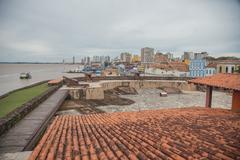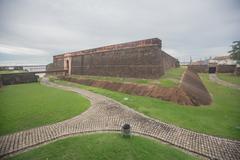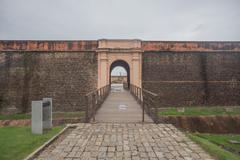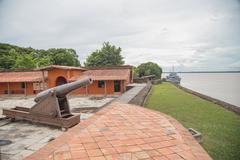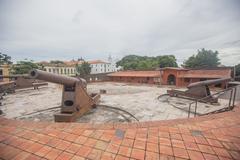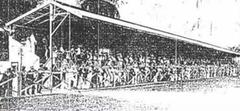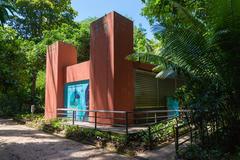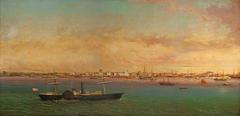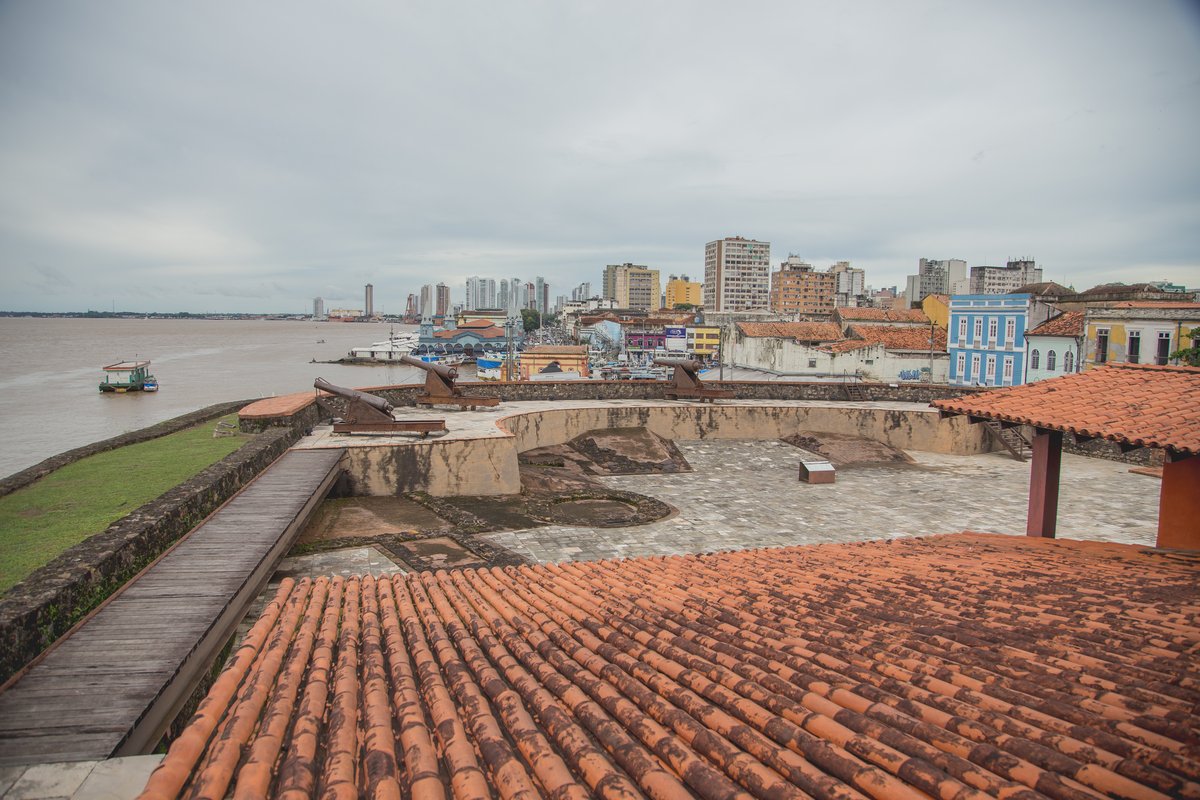
Forte do Castelo de Belém: Visiting Hours, Tickets, History & Travel Guide
Date: 14/06/2025
Introduction
Forte do Castelo de Belém, officially known as Forte do Castelo do Senhor Santo Cristo do Presépio de Belém, is the birthplace of Belém and a landmark of immense historical and cultural value in the Brazilian Amazon. Overlooking the confluence of the Guamá River and Baía do Guajará, the fort stands as a testament to centuries of colonial ambition, indigenous resistance, and the diverse heritage that shaped the city. Today, the fort not only preserves the memory of Belém’s foundation in 1616 but also serves as a vibrant museum and cultural venue, offering immersive experiences for history enthusiasts and travelers alike.
This guide details everything you need to plan your visit: from historical background and architectural highlights to current opening hours, ticket information, accessibility, and nearby attractions. Whether you are keen to explore the fort’s bastions, enjoy panoramic views or delve into the Museu do Encontro’s exhibits, Forte do Castelo de Belém is a must-see for anyone interested in the Amazon’s past and present. (Encontra Belém, Wikiwand, Minube)
Contents
- Introduction
- History and Cultural Significance
- Architectural Evolution
- Museum of Encounters (Museu do Encontro)
- Visiting Information
- Hours and Admission
- Accessibility
- Guided Tours
- Travel Tips
- Nearby Attractions
- Events and Modern Use
- Frequently Asked Questions (FAQ)
- Visuals Suggestions
- Conclusion
- Sources
History and Cultural Significance
Foundation and Colonial Context
Established in January 1616 by Francisco Caldeira Castelo Branco, the Forte do Castelo de Belém was constructed to assert Portuguese control over the Amazon and protect the fledgling settlement from both indigenous uprisings and European rivals. Its strategic position at the mouth of the Amazon River allowed the Portuguese to secure vital trade routes and resources, making it the cornerstone for the region’s colonization.
The fort’s establishment marked the beginning of the city of Belém (then Feliz Lusitânia), with its name and religious dedication reflecting the timing of the Portuguese arrival during the Christmas season. The fort quickly became the nucleus of urban development, giving rise to the Cidade Velha district and shaping the city’s commercial and administrative trajectory (Encontra Belém, Wikiwand).
Evolution Through Conflict and Urban Growth
Throughout the 17th and 18th centuries, the fort played a critical defensive role, withstanding attacks during the Tupinambá Revolt and deterring Dutch and English incursions. Its military importance drove repeated upgrades in materials and layout, evolving from a simple wooden palisade to a robust structure of rammed earth and masonry. By the 18th century, the fort’s bastions, guardhouses, and artillery reinforced its status as both a military outpost and a symbol of Portuguese authority in the Amazon (Wikiwand).
Symbol of Cultural Plurality
Beyond its military function, Forte do Castelo embodies the cultural plurality of Belém, integrating Indigenous, European, African, and Caribbean influences. Its proximity to the Catedral da Sé, the site of the renowned Círio de Nazaré festival, underscores its ongoing relevance in the city’s spiritual and communal life.
Architectural Evolution
Early Construction and Strategic Position
The fort’s initial design was a pragmatic response to urgent defensive needs, utilizing local materials such as wood and palm thatch. Its site—chosen for commanding views of the river and bay—allowed the Portuguese to control access to the Amazon and monitor the movement of goods and people (Lugares de Memória).
Reinforcements and Restoration
Following indigenous uprisings and climatic challenges, the structure was rebuilt in 1621 using taipa de pilão (rammed earth) and basket-work, later reinforced with stone and masonry. The fort’s polygonal layout includes bastions designed for overlapping fields of fire, thick ramparts to withstand cannon attacks, and artillery platforms that today provide panoramic city views. Restoration efforts in the 18th and 20th centuries have preserved much of the original design, while adapting the site for museum use and public access (Wikiwand).
Internal Features
Key structures within the fort have included a guardhouse, prison, arsenal, powder magazine, and the Chapel of Santo Cristo (c.1640). Archaeological investigations have recovered original foundations and significant artifacts, enriching the visitor experience (Lugares de Memória).
Museum of Encounters (Museu do Encontro)
Housed within the fort, the Museu do Encontro offers an engaging introduction to the history of Portuguese colonization in the Amazon. The museum’s exhibits are divided into three main sections:
- Indigenous History: Featuring artifacts and displays on pre-colonial cultures, especially Marajoara ceramics (dating back to 1,500 B.C.) that are still crafted today (Janelas Abertas).
- Colonial Encounters: Documents and objects illustrate the arrival of the Portuguese, the founding of Belém, and the interplay with indigenous communities.
- Archaeological Finds: Ceramics, tools, and relics discovered during excavations at the site, providing tangible links to the city’s origins (Minube).
Visiting Information
Hours and Admission
- Opening Hours: Tuesday to Sunday, 9:00 AM to 5:00 PM. Closed on Mondays and some public holidays (Museumspedia).
- Tickets: Admission typically ranges from BRL 4 to BRL 10, with free entry on weekends. Children under 6 enter free, and reduced prices are available for students and seniors. Payment is mainly in cash or via Pix (Museumspedia).
Accessibility
The fort is partially accessible, offering ramps and accessible restrooms, though some historic sections feature uneven surfaces. Staff are available to assist visitors with mobility needs.
Guided Tours
Guided tours are available daily and provide valuable context about the fort’s history and architecture. Tours can often be arranged on site or in advance (Postcard from Taylor).
Travel Tips
- Best Time to Visit: July to December is the dry season with more comfortable weather. Mornings on weekdays tend to be quieter.
- Photography: The ramparts and courtyards are excellent spots for photos, especially at sunset over Guajará Bay (Museumspedia).
- How to Get There: Located in the historic center, the fort is easily reached by taxi, bus, or on foot from downtown (Janelas Abertas).
- Safety: The area is generally safe during the day, but as with any urban center, remain alert.
Nearby Attractions
- Casa das Onze Janelas: Colonial mansion housing a contemporary art museum.
- Catedral da Sé: Main cathedral adjacent to the fort.
- Ver-o-Peso Market: Lively traditional market for local flavors and crafts.
- Dom Frei Caetano Brandão Square: Picturesque plaza with historical monuments.
Events and Modern Use
The fort regularly hosts cultural events, including concerts, art exhibitions, and historical reenactments. Check the Feliz Lusitânia complex’s social media or official tourism channels for upcoming activities (Minube). Conservation and site management are overseen by IPHAN, ensuring the fort’s historical integrity and community engagement.
Frequently Asked Questions (FAQ)
Q: What are the official visiting hours of Forte do Castelo de Belém?
A: Tuesday to Sunday, 9:00 AM–5:00 PM; closed on Mondays.
Q: How much does it cost to visit?
A: Tickets typically cost BRL 4–10, with free entry on weekends and reductions for students and seniors.
Q: Are guided tours available?
A: Yes, daily tours can be arranged and are recommended for deeper historical insight.
Q: Is the fort accessible for people with disabilities?
A: The fort is partially accessible with ramps and adapted restrooms, but some historic areas may pose challenges.
Q: Can I take photos inside the fort?
A: Photography is allowed, especially on the ramparts with panoramic views.
Q: What other attractions are nearby?
A: Casa das Onze Janelas, Catedral da Sé, Dom Frei Caetano Brandão Square, and Ver-o-Peso Market are all within walking distance.
Visuals Suggestions
- Panoramic view of Forte do Castelo de Belém overlooking Baía do Guajará (alt text: “Panoramic view of Forte do Castelo de Belém overlooking Baía do Guajará”)
- Interior of Museu do Encontro with Amazonian archaeological exhibits (alt text: “Interior of Museu do Encontro showcasing Amazon colonization exhibits”)
- Historic map or plan of the fort from the 18th century (alt text: “Historic 18th-century plan of Forte do Castelo de Belém”)
Conclusion
Forte do Castelo de Belém is a living monument that bridges Belém’s colonial foundation with its dynamic present. Its ramparts, museum exhibits, and commanding river views provide an enriching experience for visitors of all backgrounds. Integrated within the Feliz Lusitânia complex, the fort invites exploration of both the city’s military heritage and its vibrant cultural scene. For updated information, special event schedules, and guided tours, consult official sources and consider downloading the Audiala app for interactive maps and audio guides. A visit to Forte do Castelo de Belém is a journey through time—and a highlight of any trip to the Amazonian capital.
Sources
- Encontra Belém
- Wikiwand
- Minube
- Lugares de Memória
- Museumspedia
- Janelas Abertas
- Postcard from Taylor
- Victoria Cruises Blog
- Liberal Amazon
